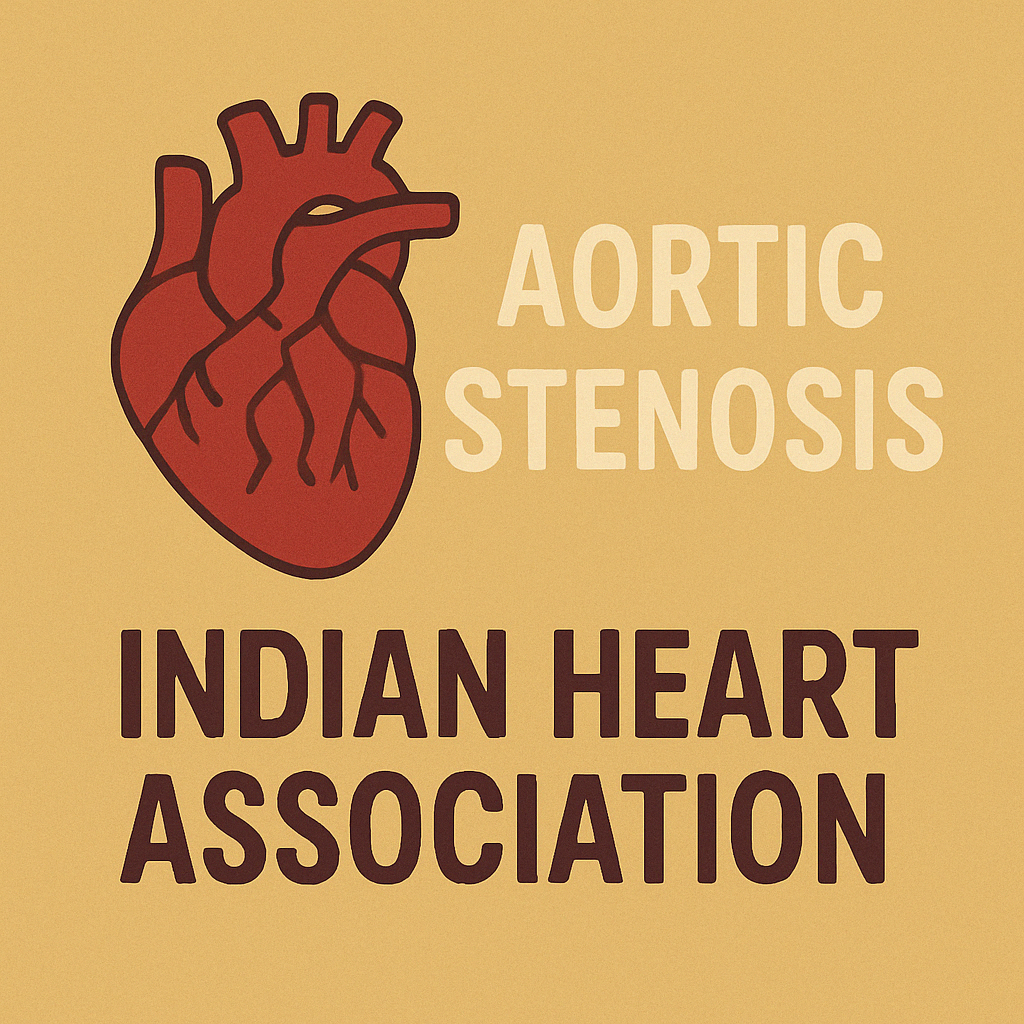Published by the Indian Heart Association
Reviewed by the Physician Team of Indian Heart Association

Aortic Stenosis in Indians – Symptoms, Causes, and Treatment
What You’ll Learn in This Article
- What is Aortic Stenosis?
- Symptoms to Watch For
- Causes and Risk Factors
- How is Aortic Stenosis Diagnosed?
- Treatment Options
What is Aortic Stenosis?
Aortic stenosis in Indians is a condition where the aortic valve narrows and restricts blood flow from the heart to the rest of the body. The narrowing can lead to reduced oxygen supply, increased strain on the heart, and eventually heart failure if left untreated.
It commonly occurs in older adults due to age-related valve calcification. In younger patients, it may be due to a bicuspid aortic valve, a condition where the valve has two leaflets instead of three.
Symptoms to Watch For
Symptoms can appear gradually, and many people unconsciously reduce physical activity to avoid them. Common signs include:
- Shortness of breath, especially during exertion
- Chest tightness or discomfort
- Fatigue or lightheadedness
- Fainting spells
- Heart murmur detected by a doctor
If you notice any of these symptoms, especially if they worsen with activity, seek medical evaluation promptly.
Causes and Risk Factors
The most common cause of aortic stenosis in Indians is age-related degeneration of a tricuspid (three-leaflet) valve. Other causes include:
- Bicuspid aortic valve (present at birth)
- Long-term high blood pressure
- Diabetes and high cholesterol
- Chronic kidney disease
- Rheumatoid arthritis and other inflammatory diseases
- Overactive parathyroid glands or a history of smoking
It’s not caused by eating calcium-rich foods — valve calcification is a result of aging, inflammation, and metabolic dysfunction.
How is Aortic Stenosis Diagnosed?
Your doctor may detect a heart murmur during a routine check-up, prompting further testing. Diagnosis is confirmed with an echocardiogram, which visualizes the valve and measures its severity.
Based on the severity, your cardiologist may recommend routine monitoring or refer you to a heart specialist for advanced care.
Treatment Options
Once symptoms develop or the condition becomes severe, valve replacement is the only effective treatment. Two primary options are:
1. Open Heart Surgery
Recommended for most patients under 65. The damaged valve is replaced with either a mechanical valve (long-lasting, but requires blood thinners) or a tissue valve (lower lifespan, but no long-term medication).
2. TAVI (Transcatheter Aortic Valve Implantation)
This minimally invasive option is ideal for older adults or those unfit for surgery. A replacement valve is inserted via a catheter through the groin and positioned inside the existing valve. Most patients feel better quickly after the procedure.
Follow-up care includes regular echocardiograms and lifestyle changes. Some patients may need repeat procedures after 10–20 years depending on the type of valve used.
The Indian Heart Association urges early recognition and monitoring of aortic stenosis in Indians. With proper care and timely intervention, most people can live longer and enjoy improved quality of life.
🩺 Explore more resources at our Health Content Hub.
🔗 For global guidance, visit the Harvard Health Aortic Stenosis Center.
